Every picture tells a story, but some of the best ones aren't obvious at first glance. From funky kitchen tools to everyday home goods, certain objects are worth a second look. We're here to tell their stories.
Today: The history of Champagne coupes is unexpectedly (or maybe fittingly) saucy, and just in time for Valentine's Day.
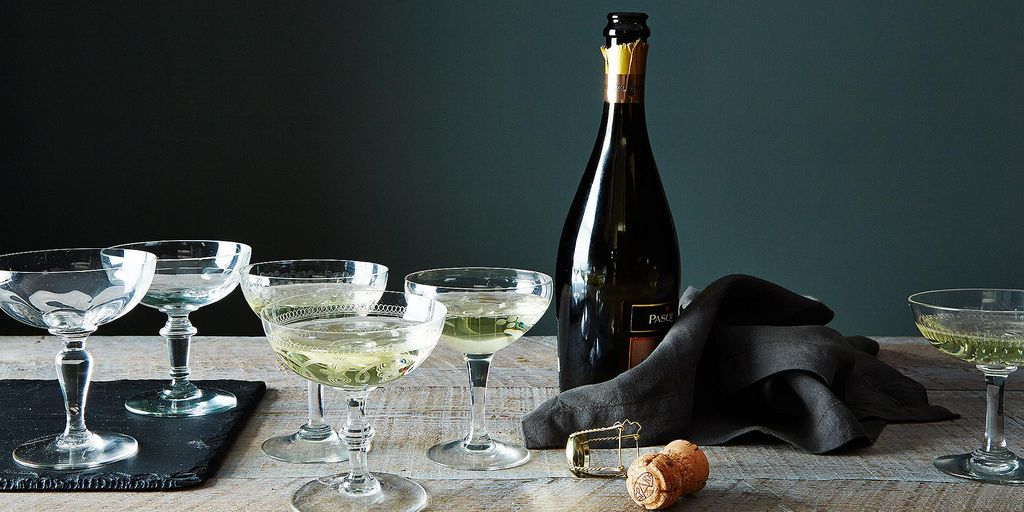
From Winston Churchill to Napoleon Bonaparte to Mark Twain, everyone who was anyone in history seemed to have something to say about Champagne. After all, as Madame de Pompadour once said, “Champagne is the only drink that leaves a woman still beautiful after drinking it.” As Louis XV’s royal mistress, she knew a thing or two about beauty, and also about Champagne: She was one of Claude Moët’s most loyal customers.
More: Set the table with a pair of vintage Champagne coupes.
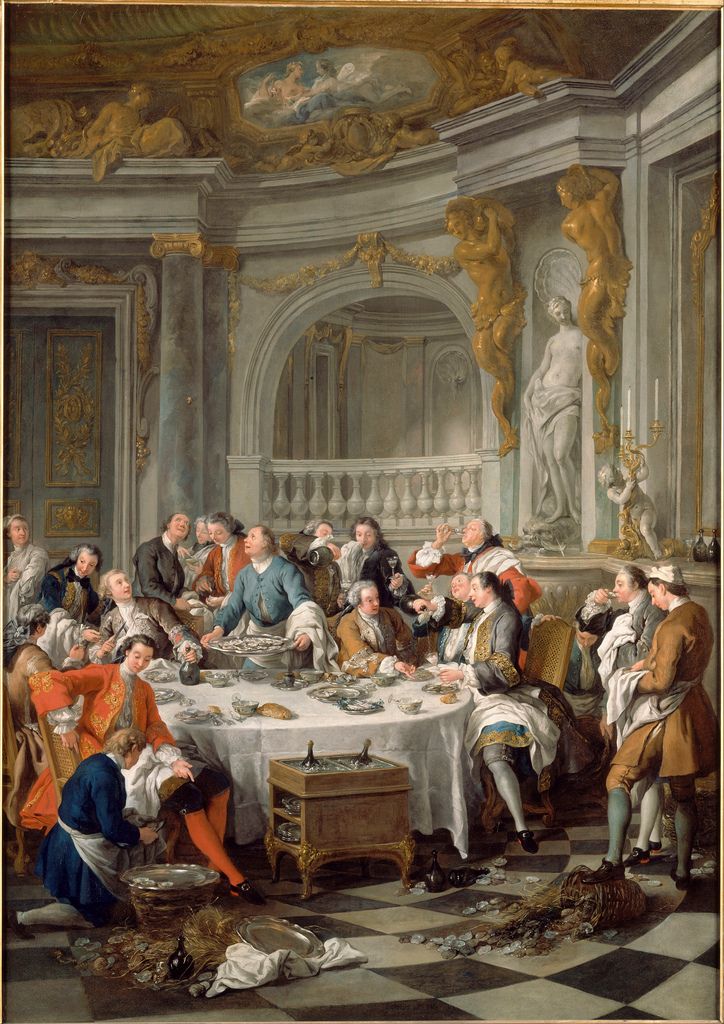
Image above: Jean-François de Troy (1679–1752), Le Déjeuner d’Huîtres, 1734
Louis XV didn’t leave the Champagne drinking to Madame de Pompadour, though. It was quite literally the drink of kings in the 17th century; Louis XV's private dining room had a painting of a post-hunt oyster lunch, complete with a Champagne action scene. This was the first time that it was ever depicted in a painting, and if you look closely at the head of the table, you can see a man who has just popped the cork -- he's still holding the knife used to cut the string that held it in place. Follow his gaze, and you can even see the cork in mid-air.
In these early days of Champagne, it wasn't so much a beverage to be savored, but rather something to slam like a shot of tequila. People drank each serving in one big gulp and then turned their glasses over in a bowl to allow the sediment to drain out. The Champagne glasses in Louis XV's painting look remarkably like what we call a Champagne coupe -- basically round bowls on stems. But where did that shape originate?
More: Here's a pair of glasses that will keep your Champagne bubbly for longer.
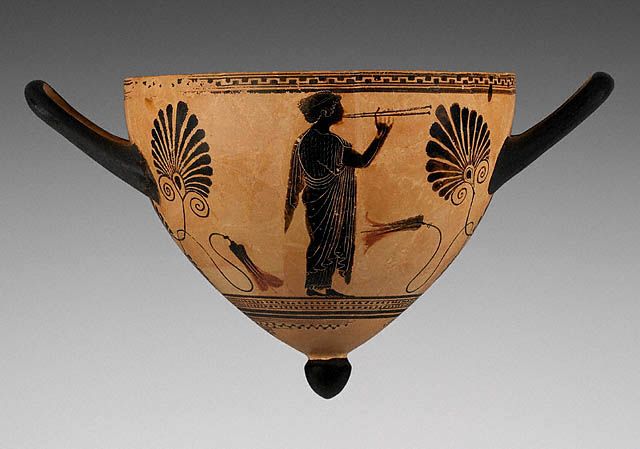

Images above, from left: A Greek mastos cup from the Getty museum; La jatte-téton from the Sevres Museum
When it comes to origin stories, the Champagne coupe's usually begins with human anatomy. The glass is often thought to be modeled on a breast -- but not just any breast: Rumor has it that the shape was inspired by Helen of Troy, or Marie Antoinette, or some even say Madame de Pompadour. (After all, the Greeks did drink out of a breast-shaped cup called a mastos cup, which was complete with an articulated nipple.)
It's said that Louis XVI -- grandson of Madame Pompadour's man -- gifted his wife Marie Antoinette a jatte-téton: a breast-shaped cup that was a throwback to the one used by the Greeks. The story goes that he surprised her with a white marble dairy at their summer house, Château de Rambouillet, complete with a 65-piece set of original porcelain dishes to be used for dinner parties. Designed by the storied French porcelain house Sèvres, this set included the cup, which was supposedly modeled after Marie Antoinette's own breast. In order to actually drink from it, one had to remove it from the base and carefully cradle it in both hands.
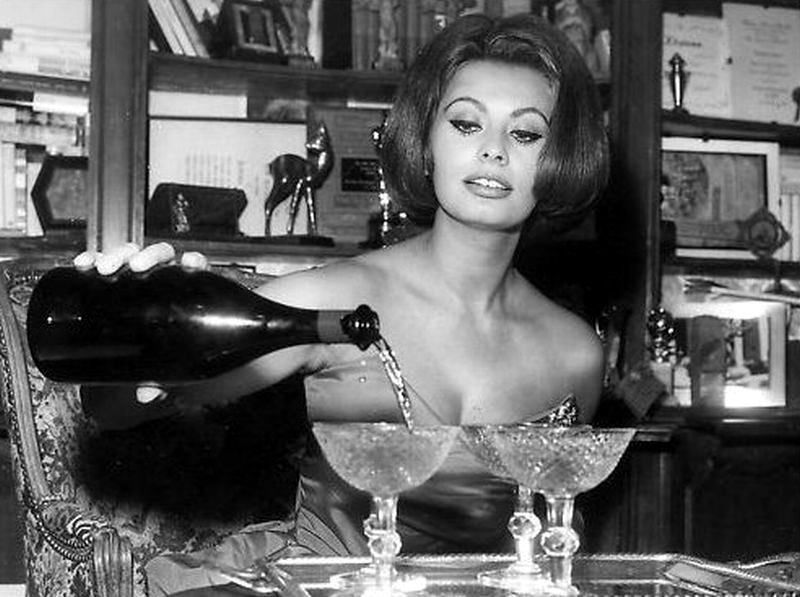
Image above: Sofia Loren fills her coupes.
In reality, all breast references to the origin of the Champagne coupe are decidedly false: Marie Antoinette didn't even know about the surprise dairy, so how could the cup have been modeled from her form? But the fact that the rumors persist says something about the perceived sexiness of the coupe. It was, after all, the Champagne vessel of choice for ‘20s flappers, and Hollywood leading ladies from Marilyn Monroe to Sophia Loren were frequently photographed imbibing from a coupe in their heydays.
As with the best myths, the idea of breast-shaped Champagne coupes has its share of modern iterations. In 2008, Karl Lagerfeld created a breast-inspired bowl for Dom Pérignon that was a tribute to Claudia Schiffer. And to celebrate her 25 years in the fashion industry just last year, Kate Moss lent her left breast to be used as the model for a coupe commissioned by London's 34 Restaurant, sister establishment to The Ivy. The Champagne coupe isn’t just sexy, it’s also elegant -- which Jackie Kennedy demonstrated when she sipped bubbly from one at the Stork Club in Manhattan for John F. Kennedy's 39th birthday in 1956.
More: Make your next cake using Champagne icing.
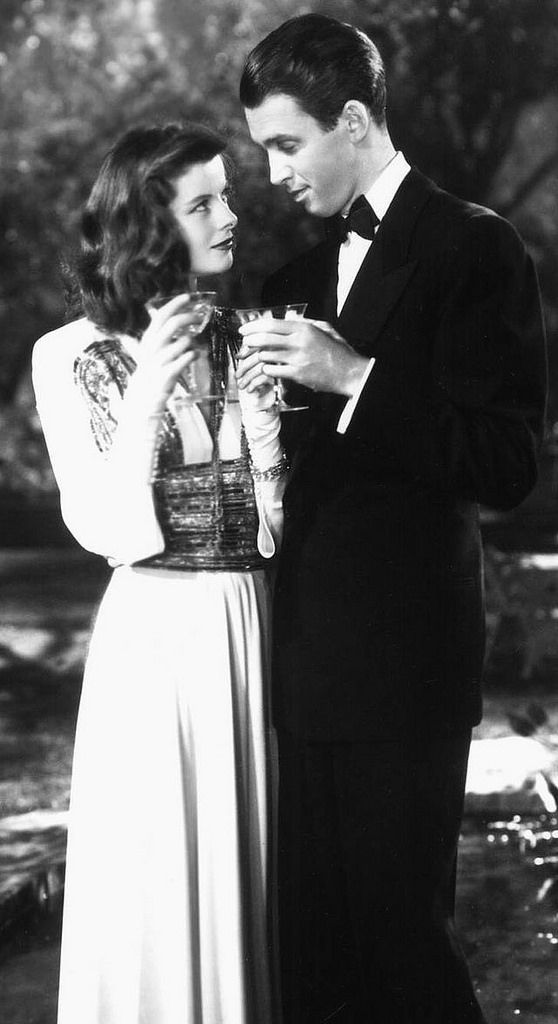
Image above: The Philadelphia Story with Katharine Hepburn and Jimmy Stewart
Somewhere after the mid-1950s, the Champagne flute began creeping onto the scene; by the ‘80s and ‘90s, there was nary a coupe in sight. Flute enthusiasts claimed that the glass was better suited to prolonging the trademark bubbles, sparking a tug-of-war between Champagne glasses that continues today. Some Champagne sophisticates prefer more of a tulip-shaped glass, which does double duty of keeping the bubbles alive longer and also allowing room for your nose to take in the aroma. Austrian glass maker Riedel even introduced a new teardrop-shaped Champagne glass -- with a more generous bowl that then narrow towards the top.
Lucky for coupe enthusiasts, the classic breast-shaped glass persists. It’s been making a comeback in the last few years, partially helped by shows like Mad Men. If you can handle sacrificing a few bubbles for a bit of tradition and a lot style, then I suggest taking a page from the gentleman at that 1734 oyster lunch. Because if you have to worry about your bubbles, maybe you’re just not drinking fast enough.
Photo credits, from start: Champagne coupes by James Ransom; Le Déjeuner D'Huîtres from Wikipedia Commons; Mastos cup from the Getty Museum; La Jatte-Téton from the Sevres Museum; Sofia Loren from unknown source; The Philadelphia Story from Wikipedia Commons








See what other Food52 readers are saying.